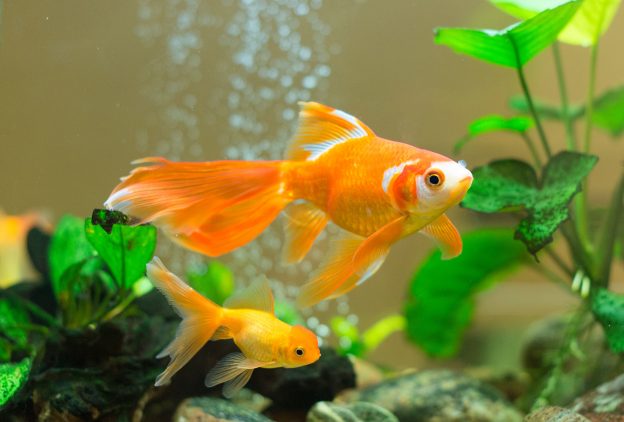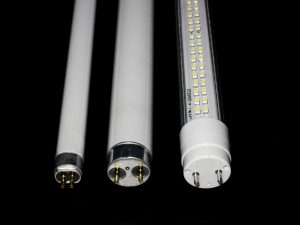We’ve talked about the importance of using RODI water for your fish tank and the process of changing the water. What we haven’t discussed is how to clean an aquarium tank itself, along with its contents.
As with everything else associated with owning and maintaining a fish aquarium, cleaning it requires gentleness and tender loving care. Most of the fish tank’s inhabitants are living beings, after all, and they depend on you to keep them strong and healthy.
It’s important to understand the easiest, neatest, safest, and most sanitary methods of cleaning an aquarium tank to ensure the well-being of your livestock.
How to Clean an Aquarium Tank: What to Do
• Use algae pads and scrapers to clean the inside of the tank.
• If they appear especially dirty or have an excessive amount of algae, remove artificial rocks, plants, and other decorations from the tank before cleaning them with an algae scraper.
• Remove excess debris from live plants by gently scrubbing them with your fingers. If the algae growth is significant, soak the plants in a solution of 10 percent bleach and water for 2 to 3 minutes. Rinse them thoroughly with RODI (reverse osmosis deionization) water before returning them to the tank. Be extremely cautious when using this method, as bleach is harmful to the tank’s inhabitants.
• When it comes to decorations, you can avoid bleach altogether by simply placing them in the sun for 3-5 days. The sun will clean the algae right off. Rinse them well prior to putting the decorations back into the aquarium. If you’d rather not go for that long without having decorations in your tank, consider purchasing a second set of decorations that you can place in the tank while the others are soaking in the sun. This process is a win-win, as you get a new look for your aquarium as you clean the tank and it’s safer than using bleach.
• Use a gravel vacuum or siphon pump to vacuum the gravel before returning items to the tank.
• Use a natural solution like a small amount of vinegar diluted in water to clean the outside of the tank and the cover with a microfiber cloth. Regularly rinse the cloth with water as you’re cleaning the tank to keep the acidic solution from entering the tank.
• Consider hiring a professional aquarium maintenance technician for the best results, to create the most sustainable habitat for your livestock, and to make life easier on you.
• If you’re cleaning a small fish bowl, it may be wise to temporarily move the fish to another bowl. If it’s a larger tank, you should be able to leave the fish in the tank while you clean it, as they will have enough room to swim away to safer waters.
• Regularly trim and prune live plants to keep them healthy, allowing them to continue naturally filtering the tank. Doing so will also eliminate excess algae growth and contribute to a more beautiful aquarium.
• If the filters are dirty or clogged, unplug them and then carefully use a gentle sponge and water from the tank to remove grime, waste, and algae.
How to Clean an Aquarium Tank: What Not to Do
• Do not start from scratch. A small amount of waste is important for the maintenance of a natural habitat. In fact, you should only change 15-20% of the water every two weeks for both reef and freshwater planted tanks, and 20-25% of the water once a month for both fresh and saltwater swim/fish only tank.
• Do not use harsh chemicals like bleach or ammonia in the water or to clean the inside of the glass. They can kill the fish and live plants.
• Do not use soap or dishwashing liquid. They’re harmless to us, but to those tiny creatures in the tank, they can be lethal or extremely irritating to their skin and eyes.
• Do not neglect regular maintenance. You can give the tank a basic, simple cleaning daily, but thoroughly clean the tank as described above at least once every week or two, depending on how many fish you have and the size of the tank.
• Do not clean the filters more than once a week. Allow them to do their job for your fish tank.
TAGS:

admin October 10, 2018 CATEGORY: Uncategorized
Should You Use Different Lighting for Saltwater Aquariums and Freshwater Aquariums?
Light is light, right? Isn’t it all the same thing? Well, when it comes to fish tanks, there’s much more to it than that. You should use different lighting for saltwater aquariums and freshwater aquariums for a few reasons.
Using Different Lighting for Saltwater Aquariums and Freshwater Aquariums
As an aquarium is set up, the goal is to mimic a natural sea life environment. That’s why a fish aquarium often includes items like dry or live rock when setting up saltwater environments, live plants, coral, and various substrates, depending on if it’s a freshwater aquarium or saltwater aquarium.
While the fish probably don’t need as much light as we think they do, some lighting is critical. The purpose of the light is more for us to see them, but it’s also important for the natural behavioral characteristics of the fish and for the overall health of the aquarium and its inhabitants, especially if they would naturally live in shallow water.
Following are some basic guidelines regarding the best lighting to use for different types of aquariums, as listed by Doctors Foster and Smith.
• Fish-only aquariums that contain fish, artificial plants, and decorative wood or ceramics: Standard, power compact fluorescent system, or LED lights at 1 to 2 watts per gallon.
• Freshwater aquariums that contain live plants that depend on light: Standard fluorescent, T-5, HO, VHO, Power Compact, Metal Halide/HQi, or LED at 2 to 5 watts per gallon. When it comes to freshwater aquariums, too much light may result in the growth of algae, but not enough light can endanger the plants. For that reason, it’s important to ensure that the right amount and intensity of light is used.
• Saltwater aquariums / marine reef aquariums that contain fish, invertebrates, corals, and live rock: The recommended lighting system is T-5 HO, VHO, Power Compact, Metal Halide/HQI, or LED. The strength and saturation of light depends greatly on the natural habitat of your specific fish and other wildlife. In the wild, corals can be found deep underwater or in shallower areas, and the same goes for the type of fish that are in your saltwater aquarium. Generally, if your reef aquarium is 24 inches deep or less, use a lighting system of 4 to 8 watts per gallon.
Regardless of how much or what type of light is used, it’s important to regulate the temperature of the tank. Tank water that is overheated can be dangerous to the wildlife. For this reason, you also should limit the use of strong lights or use a lighting system that can be dimmed. It may be wise to have the lighting system on a timer as well.
Have Seatech Aquariums Install Your Aquarium and Its Lighting System
Now that you understand a little more about the different lighting for saltwater aquariums and freshwater aquariums, there are a couple more things you should know.
First, each aquarium is wonderfully unique, and making it so is our goal. The possibilities are endless when it comes to creating a natural habitat for your wildlife. Each piece of coral is as different as each type of fish in the aquarium, and a combination of all the different elements of your aquarium is what makes it all yours. For that reason, the best type of lighting for your tank will depend on a variety of factors, which is why we will include the best system for your livestock as we install your aquarium.
It’s also important to not only use the recommended lights, but also to have them installed properly for your safety and for the safety of your livestock.
TAGS:




